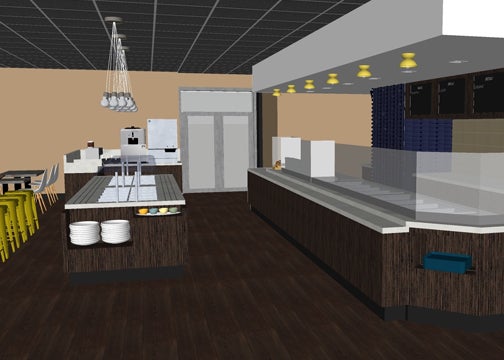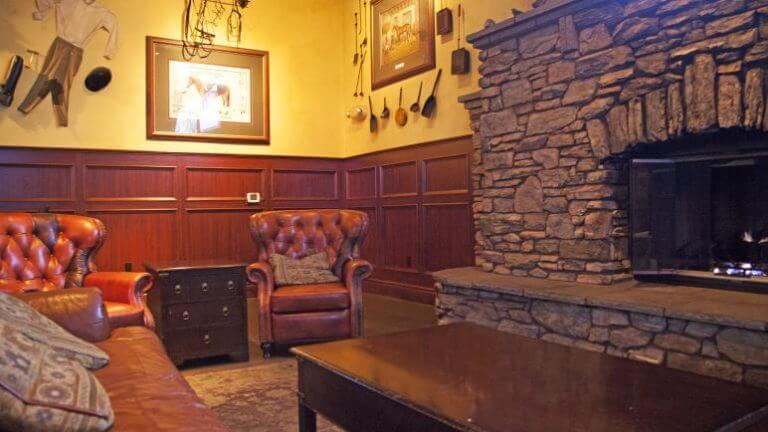

These iron backs were often cast in a handsome design. Wee can brew and bake and boyl our Cyttle all at once in him." Often a large plate of iron, called the fire-back or fire-plate, was set at the back of the chimney, where the constant and fierce fire crumbled brick and split stone.

"The Chimney is large, with an oven at each end of him: he is so large that wee can place our Cyttle within the Clavell-piece. The fireplace itself sometimes went by the old English name, clavell-piece, as shown by the letters of John Wynter, written from Maine in 1634 to his English home. With ample fire of hickory logs burning on the hearthstone, and the varied array of primitive cooking-vessels steaming with savory fare, a circle of laughing, black faces shining with the glowing firelight and hungry anticipation, would make a "Dutch interior" of American form and shaping as picturesque and artistic as any of Holland.

Its picture plainly shows the stone ledges within the fireplace, the curved iron lug-pole, and hanging pothooks and trammels. It still exists in a dismantled condition. The slave-kitchen of the old Bergen homestead stood unaltered till within a few years on Third Avenue in Brooklyn. Some Dutch houses had an adaptation of a Southern method of housekeeping in the use of a detached house called a slave-kitchen, where the meals of the negro house and farm servants were cooked and served. The iron swinging-crane was a Yankee invention of a century after the first settlement, and it proved a convenient and graceful substitute for the back-bar. On these hooks pots and kettles could be hung at varying heights over the fire. Gibcrokes and recons were local and less frequent names, and the folks who in their dialect called the lug-pole a gallows-balke called the pothooks gallows-crooks. Arnold Talbot, of Providence, Rhode Island, has folding trammels, nine feet long, which were found in an old Narragansett chimney heart. On them were hung iron hooks or chains with hooks of various lengths called pothooks, trammels, hakes, pot-hangers, pot-claws, pot-clips, pot-brakes, pot-crooks. The destruction of a dinner sometimes was attended with the loss of a life. Many annoying, and some fatal accidents came from the collapsing of these wooden back-bars. The inflammable catted chimney of logs and clay, hurriedly and readily built by the first settlers, soon gave place in all houses to vast chimneys of stone, built with projecting inner ledges, on which rested a bar about six or seven or even eight feet from the floor, called a lug-pole (lug meaning to carry) or a back-bar this was made of green wood, and thus charred slowly-but it charred surely in the generous flames of the great chimney heart. At night children could sit on these seats and there watch the sparks fly upward and join the stars which could plainly be seen up the great chimney-throat.īut as the forests disappeared under the waste of burning for tar, for potash, and through wanton clearing, the fireplaces shrank in size and Benjamin Franklin, even in his day, could write of "the fireplaces of our fathers." Often there were seats within the chimney on either side. In the houses of the first settlers the chimneys and fireplaces were vast in size, sometimes so big that the fore-logs and back-logs for the fire had to be dragged in by a horse and a long chain or a hand-sled was kept for the purpose.
#FIRESIDE CAFE IN FRANKLIN WINDOWS#
The walls were often bare, the rafters dingy the windows were small, the furniture meagre but the kitchen had a warm, glowing heart that spread light and welcome, and made the poor room a home.

The kitchen in all the farmhouses of all the colonies was the most cheerful, homelike, and picturesque room in the house indeed, it was in town houses as well.


 0 kommentar(er)
0 kommentar(er)
